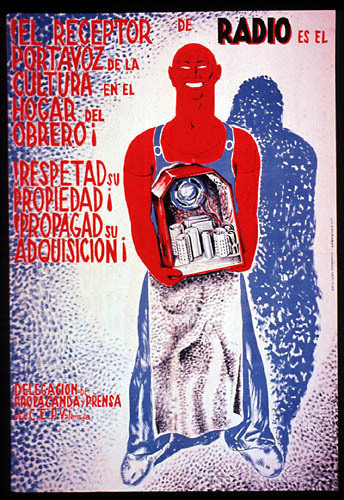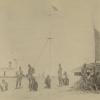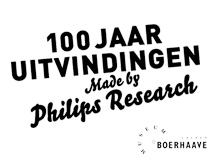Internationalizing the Spanish Broadcasting War

The radio receiver is the mouthpiece of culture in the home of the worker! Respect its property! Propagate its acquisition!
The Spanish Civil War (1936–1939) was the first war in which the radio played a vital role as a medium of propaganda and information.
What began on July 17, 1936 as a Nationalist coup d'état directed by General Franco against the Republican government soon expanded into a proxy war between Europe's right wing and popular left-wing movements. Nazi Germany and Fascist Italy intervened on the side of the nationalists, while the international federation of communists (Comintern) and later the Soviet Union sent aid and eventually arms to the side of the Republicans.
With the help of Comintern, the Republicans maintained control over most of the major transmitters of the country, except Seville, which had been taken early by forces from the coup. On their side, the insurgent Nationalists had built a network of high-powered amateur transmitters prior to the coup, and soon received a mobile 20kW transmitter from the Germans as well. The mobility of small transmitters also allowed the earliest instances of what became known during the Second World War as "black broadcasting," but were known in Spain as “ghost-broadcasts;” that is, programs that appeared to be Republican but were actually Nationalist.
Broadcasting also helped carry propaganda messages outside of Spain. Transmitters for both sides relayed messages to the world from inside the country, and the shortwave services of Portugal, Italy, the Vatican, and Germany supported the Nationalists, while Radio Moscow, the world's first major international broadcaster, broadcast in multiple languages for the Republican cause.
Portrayed in the poster here as 'the mouthpiece of culture' (including the many languages available), citizens were encouraged to tune in to the available stations - but not to steal radios to do so.
 Previous Story
Next Story
Previous Story
Next Story
How to cite this page
Suzanne Lommers, 'Internationalizing the Spanish Broadcasting War', Inventing Europe, http://www.inventingeurope.eu/philips/internationalizing-the-spanish-broadcasting-war
Sources
- Brinkmann, Sören. “Bilder Eines Krieges: Europa Und Der Bürgerkrieg in Spanien.” In Europäische Öffentlichkeit: Transnationale Kommunikation Seit Dem 18. Jahrhundert, edited by Jörg Requate and Martin Schulze Wessel, 250–272. Frankfurt am Main; New York: Campus, 2002.
- Davies, Alan. “The First Radio War: Broadcasting in the Spanish Civil War, 1936-1939.” Historical Journal of Film, Radio and Television 19, no. 4 (1999): 473–513.
- Graham, Helen. The Spanish Republic at War, 1936-1939. Cambridge: Cambridge University Press, 2002.
- Lommers, Suzanne. “Europe - On Air : Interwar Projects for Radio Broadcasting”. Amsterdam: Amsterdam University Press, 2012.



















